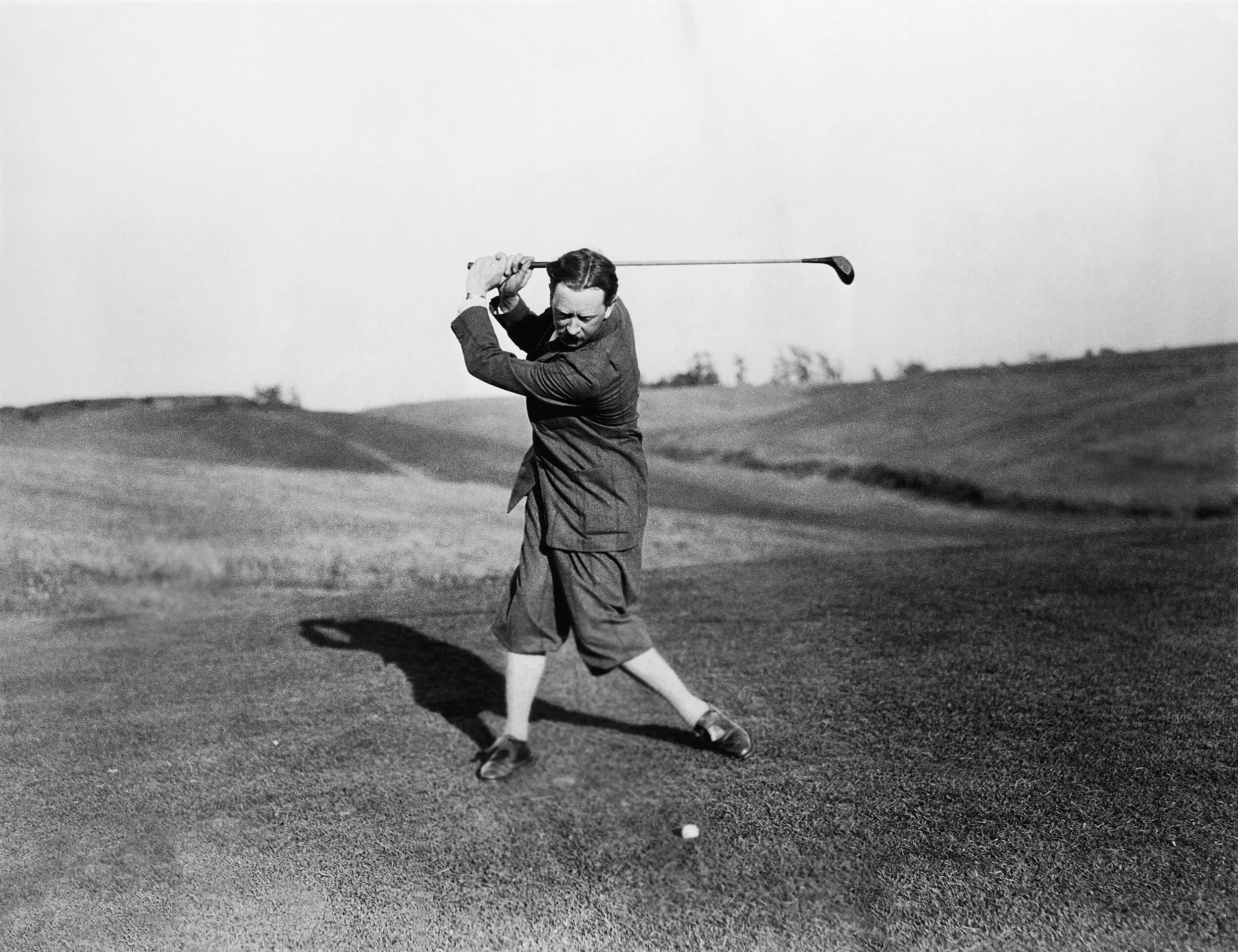"Bring golf sticks, there is a course on the premises and Sirs F & S play most afternoons and look forward to games with you" - Queen Victoria
Photograph of Queen Victoria, 1882
Golf has existed on the Osborne estate since 1892.
First designed by the 7th Duke of Richmond as a two hole course. The Duke, a keen golfer was a frequent visitor to Osborne and many royals and dignitaries were both entertained and challenged on the course.
After the death of Queen Victoria, Commander Powell of the Royal Navy became the house governor and sanctioned the expansion to nine holes in 1904. Originally designed to give the Officers in residence some rest and relaxation, competitive golf really took off at Osborne after this date.
The newly expanded course was laid out a little differently to the course we know and love today, with the original clubhouse where the present 8th green is.
During World War I, the secondary wings of Osborne House were used as an officers' convalescent home with famous patients such as Robert Graves and A. A. Milne being residents. The course was in frequent use at this time and there are records detailing works to improve and alter the course.
Between the two world wars, the course was maintained to a high standard by the various groundsmen and professional golfers who where in residence at the club. However a significant amount of work was done to the course at the end of World War II, this was to mainly repair bomb craters and restore the landscape to its former glory.
The club went though various House Governors who were responsible for the upkeep of the course upto 1971, when the club captain Mr N Griffith negotiated a lease agreement to separate the course from the house.
While there have been discussions to extend to 18 holes the course has broadly been the same since the end of the war, although many improvements and modifications have taken place over the years.
Sadly in 1975 a fire destroyed the club pavilion and many of the original course records, however a new clubhouse was built and opened just a year later in 1976. The clubhouse today is based on this new design with an extension commissioned and completed in 1990.
The history of the course gives both a fascinating and intriguing insight into life over the different decades at Osborne. Anyone curious to learn more should purchase a copy of the brilliant Centenary History written by the club member June Weeks. Its available behind the clubhouse bar.
Gwola, The Queens Elephant
The Elephant Bath
The 7th hole at Osborne is one of the most interesting holes on the course.
The Elephant Bath is a challenging and long par 4 with a dog leg to the right. However the biggest feature isn't a natural one, it's the man made bath for Queen Victorias pet Elephant.
While navigating the hole, one of the questions (aside from how to make par) many golfers have asked is a simple one, why did Queen Victoria have a pet Elephant?
Queen Victoria was involved in the Treaty of Adowa, an agreement between Britain, Egypt and Ethiopia.
Signed at Adwa on 3 June 1884 the treaty ended a long-simmering conflict between Egypt and Ethiopia and recognised the independent state of Abyssunia.
In August of the same year, the Queen hosted several Abyssinian envoys at Osborne, who presented her with a young African male Elephant called 'Gwola' as a gift.
While there are many conflicting stories about the history of Gwola, and what happened to it, some say its remains are buried somewhere on the grounds of the golf club.



